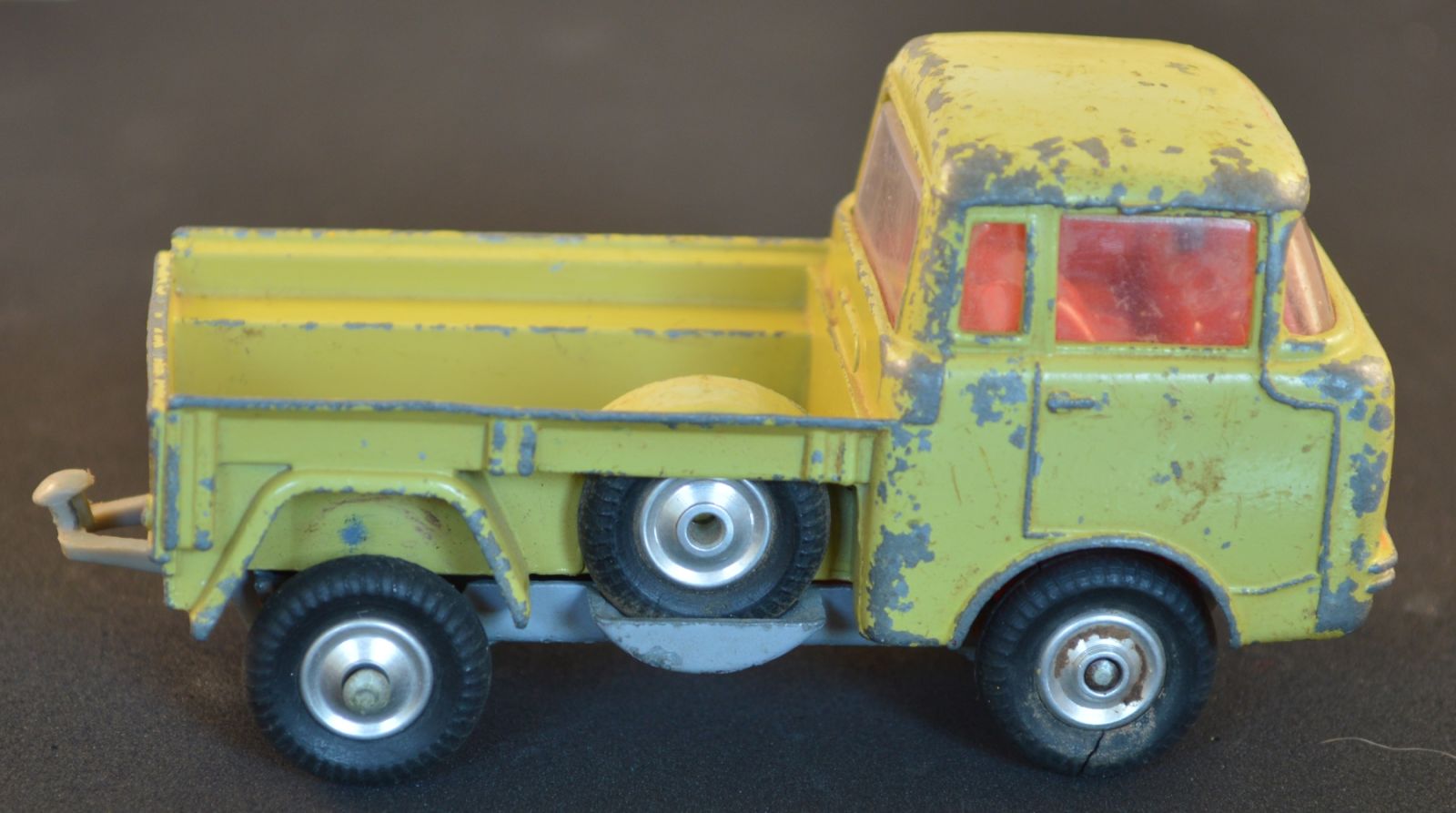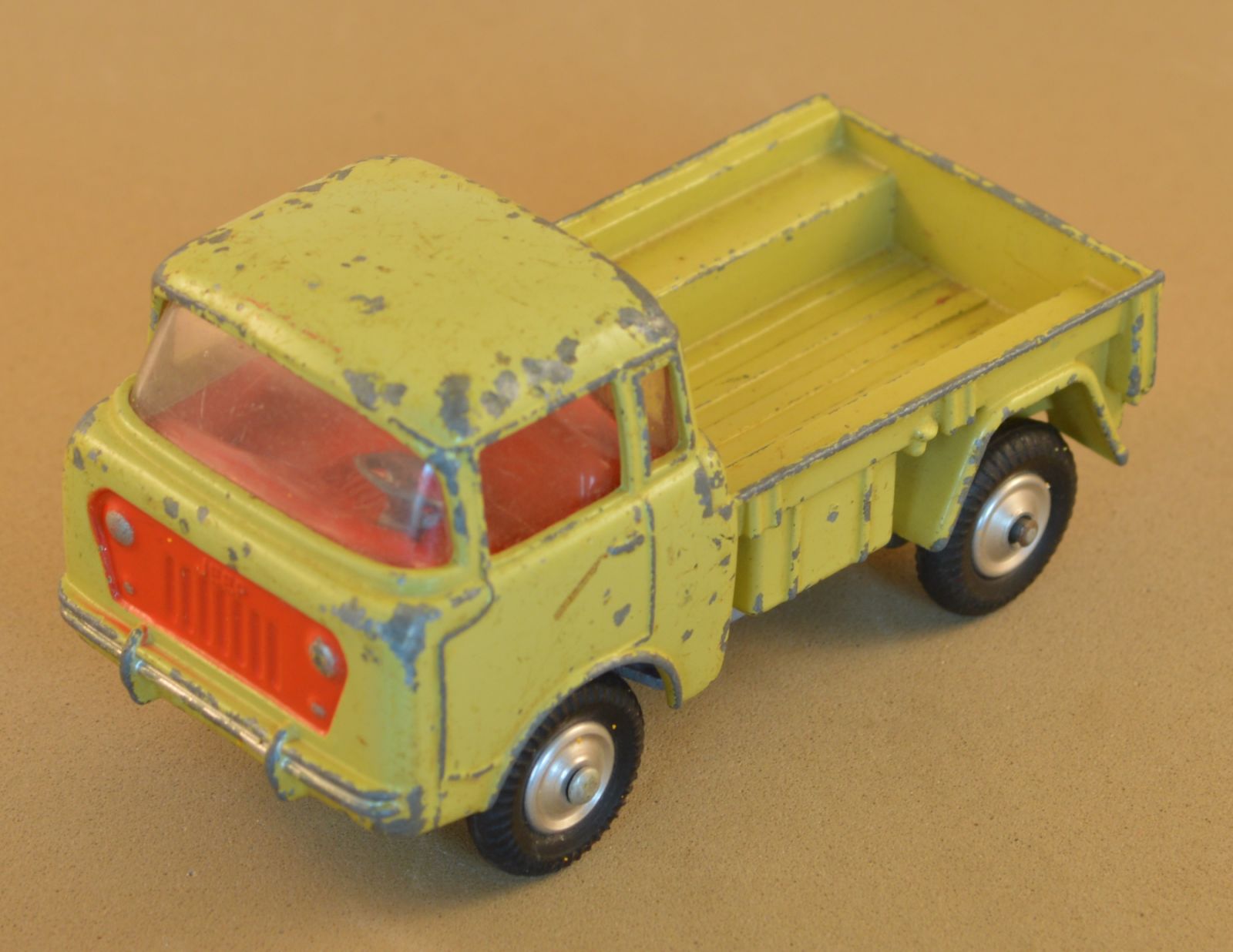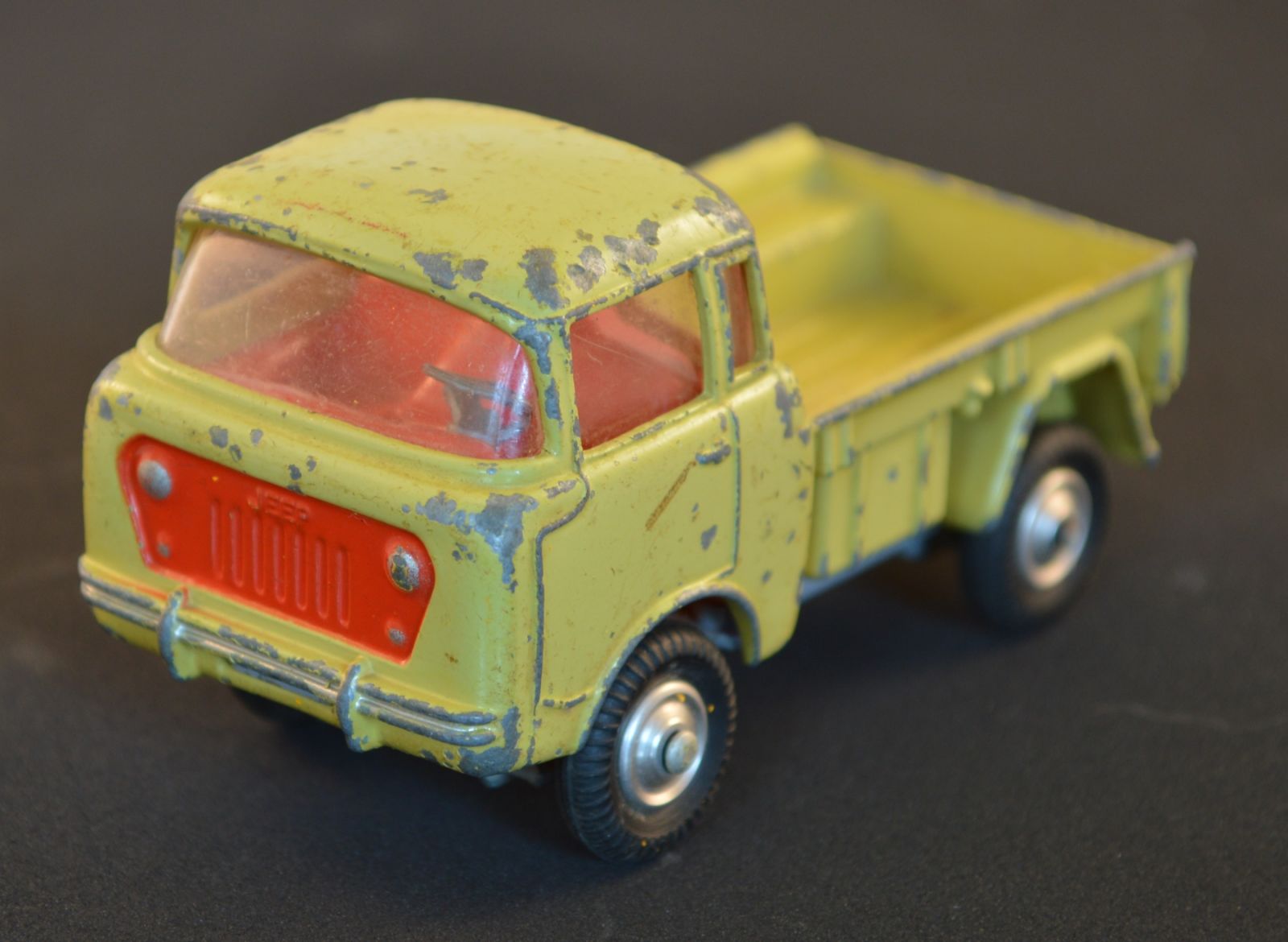Corgi #470 Jeep FC150

This model came early in the Corgi story. It’s worth a look at its construction. The base is diecast, not tin – most 1959 releases had tin bases. Another oddity is the way the rear axle is attached, via lugs cast into the body work. The doors are outlined in relief - that is, the outlines stand proud of the bodywork. Not unusual in diecast toy cars of the fifties and sixties, but Corgis are mostly engraved though, i.e. outlined with a groove.
This is only the second American vehicle Corgi produced, the first being the Studebaker in 1958.
#409 – April 1959-1965
The FC150 Jeep was first released as model number 409 in 1959. This model has no rear tilt, is always pale blue with a red radiator grille and has neither seats nor suspension. In 1965 it was re-released as number 470. The 1959 release varies only in having either turned or spun hubs which does not affect value.

#470 – March 1965
In 1965 #409 was given a bit of a make-over. Just like the ‘S’ models in 1960/61 it got seats, springs and a new feature - a detachable tarp cover for the back. There are two colour options under this model number, a navy blue or metallic khaki green, each with a detachable grey plastic tarp cover and a red painted grille. Values are fairly modest for both.
The 1:1

Forward Control trucks were work vehicles with pickup beds, as well as Jeep-tested-and-endorsed specialized bodies from other suppliers including tow trucks, fire trucks, and even dump trucks; military versions of these trucks were also sold. Mahindra produced FC-150 models in India, after assembling Jeeps from knockdown kits starting in 1947. The FC-150 was powered by a four cylinder, the FC-170 by a six; both were available in chassis-cab, pickup, and stake forms, in four wheel drive only.
FC-150
Introduced in 1956, FC-150 models were based on the CJ-5 (81 in (210 cm) wheelbase) with a 78 in (200 cm) bed. In 1958, the FC-150 received a new, wider chassis. Its track was widened from 48 in (120 cm) to 57 in (140 cm). A 1958 FC-150 concept featured an 83.5 in (210 cm) wheelbase, a widened track (which made production), and the new T-98 4-speed manual transmission. This model had a gross weight of 5,000 lb (2,300 kg)

FC-170
Introduced in 1957, FC-170 models had a 103 in (260 cm) wheelbase with a 108 in (270 cm) bed. This was achieved by the forward-control layout. A 1958 concept version of the FC-170 featured a 108 in (270 cm) wheelbase. This was required to accommodate a new 272 ci V8 engine (based on the Ford Y-block) with a new transfer case. A new 3-speed automatic transmission (based on the Ford Cruise-O-Matic) was only available with the inline-6 due to possible driveshaft angle issues. A T-98 4-speed manual was available with both engines. This model had a gross weight of 7,000 lb (3,200 kg).
FC-170 DRW
A dual rear wheel option was created for 1961 FC-170 buyers. It was a 1 short ton (0.91 t) dual-wheeled rear axle (dually) model with a 120 in (300 cm) load bed. These models have gross weights of 8,000 lb (3,600 kg) or 9,000 lb (4,100 kg).

Production
The FC Jeeps were exhibited to Jeep dealers in a closed-circuit telecast on November 29, 1956, and were on display for the public at the December 1956 National Automobile Show in New York City. The FC-150 went on sale at dealer showrooms on December 12, 1956. The initial response to the four-wheel drive FC Jeeps was favorable. Their best sales year came in 1957, when 9,738 trucks were sold. After the introduction of the FC-170 in 1957, FC-150 sales dropped to 1,546 units in 1959, before rebounding to 4,925 in 1960. Neither model became the big seller that Willys had hoped. Total production in nine years was just over 30,000 units. The FC line was discontinued in 1964.

Military variations
Aside from Forward Control Jeeps being built for civilian use, there were also four models manufactured for the military.
M676 - Basically a civilian FC with minor modifications
M677 - A four-door crew cab with a canopy over the bed
M678 - An FC with a van body
M679 - An M678 refitted as an ambulance
Non-USA models
Numerous versions of FC models (most not available in the domestic market) were manufactured in many other nations under collaboration agreements with successive owners of Jeep: Willys-Overland, Kaiser Jeep, and American Motors (AMC).
India
Mahindra & Mahindra Limited in Bombay (Mumbai), India began its vehicle business in 1947 by assembling complete knock down (CKD) Jeeps. It started FC-150 production in India in 1965 and later expanded the model range for the domestic market to include the FC-170, as well as its own intermediate sized FC-160.
The FC-160 (and later FJ-160) uses a 93 in (240 cm) wheelbase. The pick-up box was by Mahindra and other bodies were available. The “cowl and chassis only” FC-160 model was popular during the 1970 s for conversion into mini-buses, ambulances, and other vehicles. Most have the basic front face of the FC. Manufacture of the Mahindra FC-160 pickup truck ended in the summer of 1999.
The FC-260 Diesel light truck was introduced in 1975. Currently, Mahindra’s four-wheel drive FJ-460 (introduced in 1983) and two-wheel drive FJ-470 van or mini-bus vehicles retain the grille arrangement of the original Forward Control. These vehicles can accommodate from 11 to 15 passengers plus the driver.
Spain
The Jeep “SV” line of Forward Control vans made in Spain. In the 1960s, Kaiser-Willys licensed Vehículos Industriales y Agrícolas (VIASA) of Zaragoza in Aragon to build Jeeps in Spain. The “SV” line of commercial trucks were built using the Commando 4x4 Jeep chassis, just like the FC models in the United States. However, the Iberian models were unlike any Jeeps produced anywhere else. The SV line included the Campeador (one-ton pickup), Duplex (double cab pickup), Furgon (one-ton van), and the Toledo (9-seat luxury passenger van). Two engines were available: the Super Hurricane in-line six petrol and a Perkins 4-cylinder diesel.
During the late 1970s, VIASA was absorbed by Ebro trucks (a division of Motor Iberica). Production ended in 1983 in favour of the modern Jeep models that VIASA are still assembling today with new updated American mechanicals.